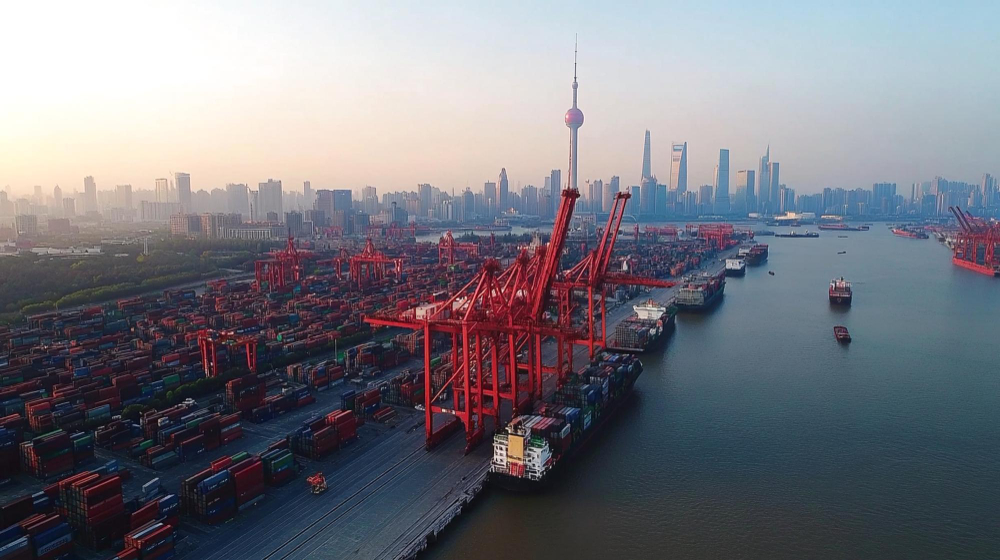Exploring China’s Export Versus Import Dynamics
Category: Chinese chance Date: 2024-10-15 Views: 1
Understanding China’s Economic Landscape
China’s economic prowess on the global stage is undeniable, and at the heart of this influence lies its intricate dance of exports and imports. This balance not only shapes China’s own economic health but also has ripple effects across the world economy. In this exploration, we delve into the essence of net exports and their pivotal role in defining economic stability and growth, not just for China but as a part of the broader global economic fabric.
1. What Are Net Exports?
Net exports represent the difference between a country's total exports of goods and services and its total imports, serving as a crucial indicator of economic health. Positive net exports signify that a country sells more to the world than it buys, contributing to a favorable trade balance. For China, a juggernaut in global manufacturing and trade, understanding this balance is key to decoding its economic strategies. The dynamics of how exports contribute to GDP growth, employment rates, and industrial development, versus how imports fulfill domestic demands, offer insights into China’s economic maneuvers.

2. The Role of Exports in China’s Economy
Exports are the lifeline of China’s economic structure. The country is a global hub for manufacturing consumer electronics, textiles, and heavy machinery. Government policies have aggressively supported the export sector through subsidies, tax incentives, and massive investments in infrastructure, boosting China’s presence in global markets. This section explores how these exports underpin economic milestones and propel China's status as a global economic powerhouse.
3. The Impact of Imports on China
While exports play a starring role, imports are equally significant in sustaining China’s economic momentum. Imports in China are diverse, ranging from crude oil and iron ore to semiconductors and advanced machinery. These imports are crucial for fueling China's manufacturing sectors and supporting its fast-paced consumer markets. This segment highlights the strategic importance of imports in balancing domestic needs with industrial capabilities, ensuring China remains competitive on a global scale.
4. China’s Trade Partnerships: A Global Perspective
China's trade landscape is a complex web of relationships spanning continents. The United States, the European Union, ASEAN countries, and many others play significant roles in this intricate network. This chapter discusses how these partnerships influence China's trade strategies, the impacts of tariffs, trade wars, and the geopolitical chess game of international trade. Recent trade agreements and their implications on economic policies and practices are also examined to understand future trajectories.
5. Challenges in China’s Trade Balance
Despite its strong position, China faces numerous challenges that could sway its trade balance. Trade tensions, notably with the U.S., present economic hurdles, while global supply chain disruptions continue to test resilience. Additionally, changes in global consumption patterns and economic policies in response to environmental concerns and labor standards are reshaping traditional practices. This section addresses these challenges and their potential impacts on China’s future trade figures.
6. Future Trends in China’s Export and Import Dynamics
Looking ahead, several trends are poised to redefine the contours of China’s trade dynamics. Technological innovations, the rise of e-commerce, and increased emphasis on sustainability are shaping new consumer behaviors and business models. This foresight explores how China is adapting to these changes, potentially leading to a more balanced and diversified economic portfolio.
The Significance of Net Exports in China’s Future
Understanding the nuances of net exports is essential for gauging China’s economic trajectory and its implications for global trade. As the world’s economic landscape evolves, so too must our analysis of these critical economic indicators. China’s ability to navigate these changes will determine its future role on the global stage, underscoring the importance of continued vigilance and adaptability in its economic policies.
This article not only provides a detailed examination of China's export and import dynamics but also contextualizes its strategies within the broader spectrum of global economic interactions, offering a comprehensive overview suitable for anyone looking to understand the complexities of international trade and economic policies.

